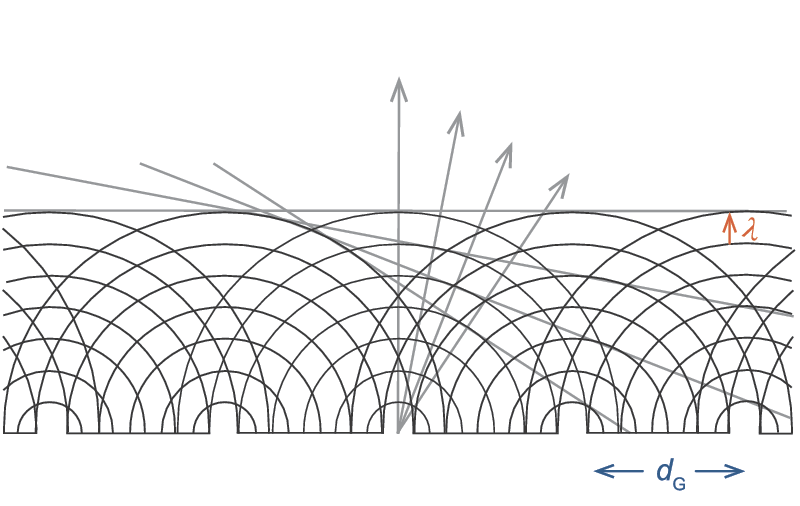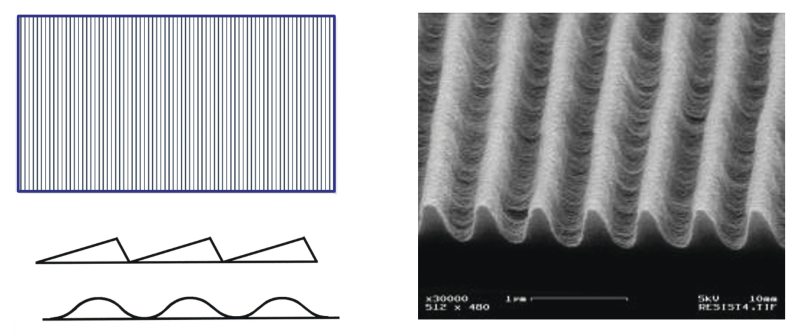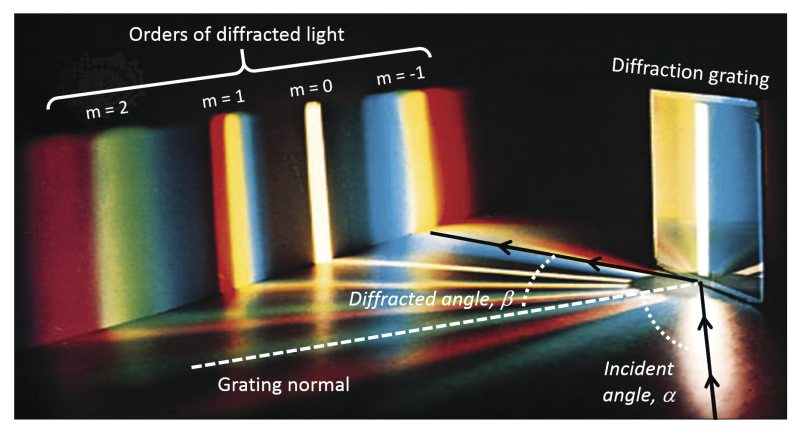A
diffraction grating is essentially a multi-slit surface. It provides angular dispersion, i.e., the ability to separate wavelengths based on the angle that they emerge from the grating. Gratings can be transmissive, like the multi-slit aperture, but they can also be reflective where the grooved surface is overcoated with a reflecting material such as aluminum. A typical diffraction grating (see Figure 2) consists of a large number of parallel grooves (representing the slits) with a groove spacing (denoted
dG, also called the pitch) on the order of the wavelength of light. This is more commonly reported as the groove density (
G), which is the reciprocal of
dG, e.g., typical gratings have
G values between 30 and 5000 grooves per mm. The groove spacing determines the angles at which a single wavelength will constructively interfere to form diffracted orders (see below), which are equivalent to the intensity peaks shown in Figure 1. In addition to the spacing of the grooves, the groove profile (see Figure 2) plays a key role in the performance of a grating. When monochromatic light strikes a grating, a fraction of it is diffracted into each order (termed its efficiency). Maximizing the efficiency into a single order, typically the first order, is often desired to ensure increased light collection. To optimize this efficiency for a single wavelength, a procedure known as blazing is performed. This involves modifying the groove profile, including facet angles, shapes and/or depths. The blaze wavelength is the wavelength for which the grating is most efficient.
 Over 8,000 products in-stock! & FREE 2-Day shipping on all web orders!* Learn More FREE T-Shirt with orders $250+ Details
Over 8,000 products in-stock! & FREE 2-Day shipping on all web orders!* Learn More FREE T-Shirt with orders $250+ Details







 Ultra-High Velocity
Ultra-High Velocity